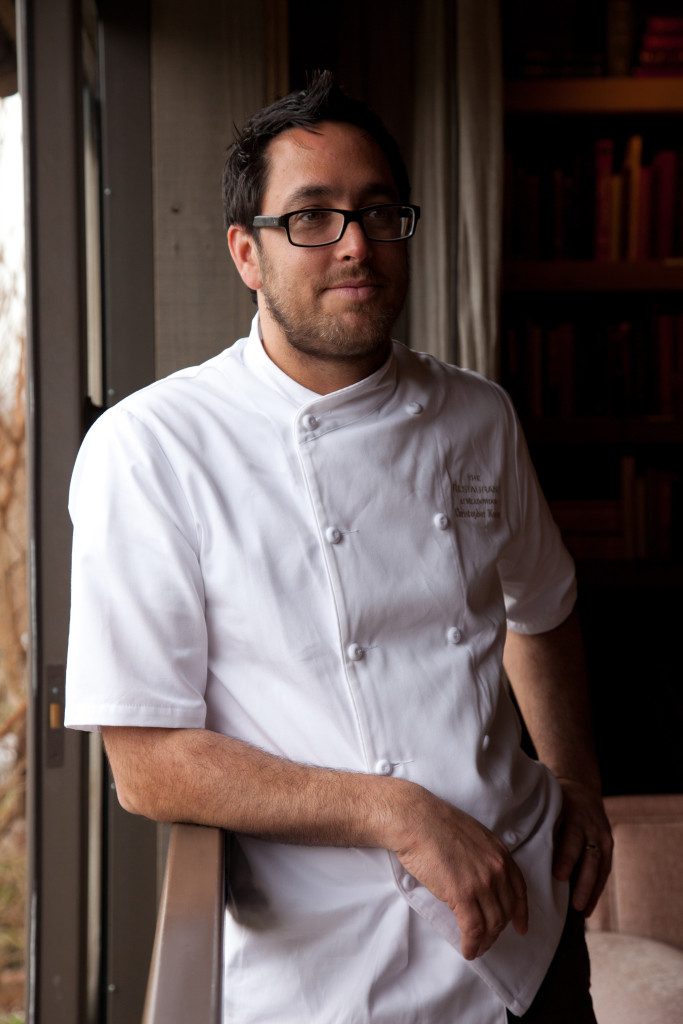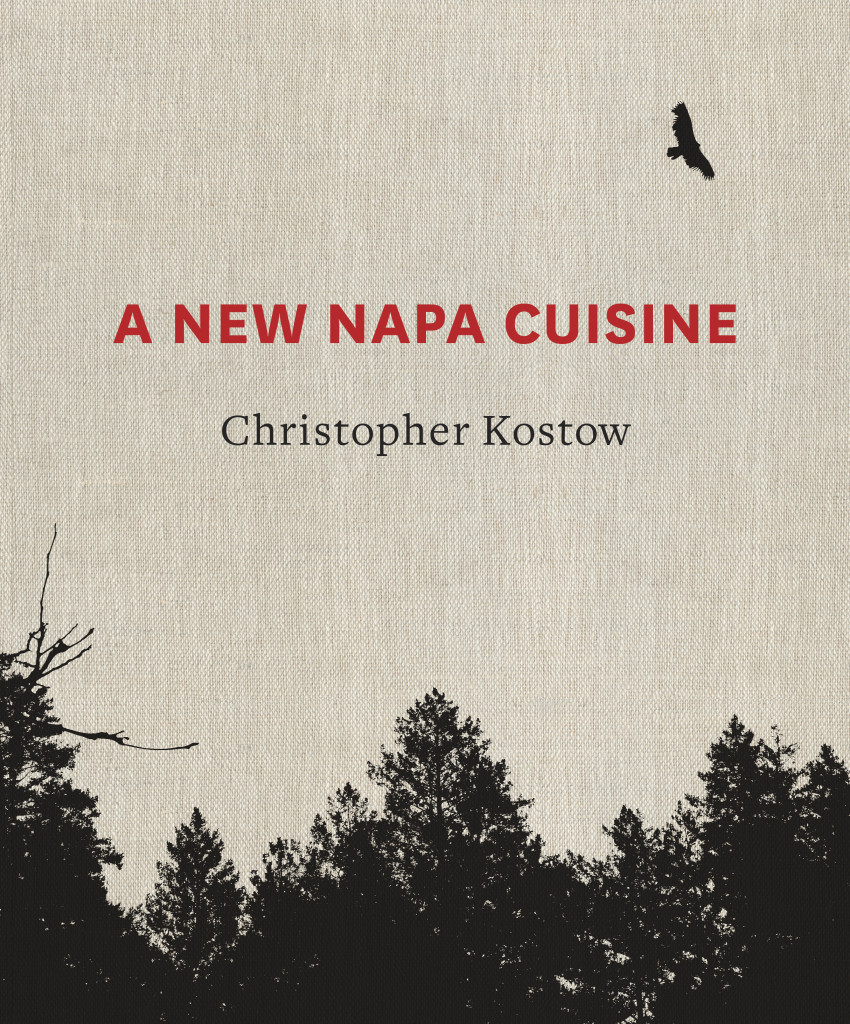
Every once in a while a cookbook comes along that disrupts the conventional wisdom of what a cookbook should be. That’s clearly the case with The New Napa Cuisine by Christopher Kostow, executive chef at The Restaurant at Meadowood in Napa Valley. This is the first book by the three Michelin-starred chef and it’s more an essay on his personal journey as a chef since taking over the reins at Meadowood in February 2008 than it is a collection of recipes from The Restaurant’s menu.
The book was just awarded “Cookbook of the Year” by The International Association of Culinary Professionals (IACP).
“It’s not really a restaurant book per se,” Kostow says. “It’s about what are the things that make up this cooking[that I do at The Restaurant and what are the things I intend to focus on in the future. It’s four main thoughts then interwoven with vignettes.”
Kostow may not have set out to create a new Napa cuisine, but that’s exactly what he’s done. This book gives you insight into how he’s done it. 
The rough textured, rustic cover of The New Napa Cuisine gives you a clue that this isn’t a pretty coffee table book. It begs to be read cover to cover, even if you don’t even cook a thing out of it. And that’s okay with Kostow. “I don’t see people cooking out of it that much,” he says. “For me it’s not about an instructional book. I hope it’s more of an inspirational book than an aesthetically pleasing book.”
What you’ll discover in chapters, A Journey to Napa, The Growers, The Artisans, The Wilds and Materia Prima, is how closely Kostow’s cooking is rooted in the land, the history and the artisans he’s met along the way after he moved from Chez TJ in Mountain View (where he earned his first Michelin star) to Napa Valley.
“When I got to Napa Valley,” he tells me, “I did very much the food I had done previously which was a little more European, a little more typical of what you would find in high end dining. It was a little more forced a little more about form, a little more precious. It wasn’t indicative of nature as things are now. It was more about what we can do versus what we can work with.”
What Kostow can work with is the new focus, from foraged items such as wild rhubarb, coastal grasses, rock crabs, manzanita berries or pine shoots. He turns to artisan food crafters who provide local squab, honey, olive oil and rabbit just to name a few. This is the new luxury he writes about, one that is not about high price tags, caviar and truffles. Sure he’ll still use those ingredients, but the new luxury means being able to deliver more on quality based not on price and perceived luxury but on uniqueness and a sense of place. You can get lobster anywhere. You can’t get potatoes cooked in beeswax anywhere but Meadowood. By the way, Kostow says cooking potatoes like this is nearly as expensive as truffles.
Leafing through the pages you notice beautifully plated dishes in rustic ceramic bowls, dishes and platters. Kostow works with local ceramic artists Lynn Mahon and Richard Carter to create designs to compliment the ingredients. Moving to this dinnerware has also been an evolution. What he looks for, Kostow says, “is what is functional in terms of the shape of the vessel vis a vis the food we’re putting in it.” That means how it ages with use, does it chip, does it have cracks or turn blue (as white dishes can do) He also considers if it is something he’s gonna want not just now but in five years from now. “That’s certainly a learning process,” Kostow says. “We have a lot of ceramics stored away we might never use again.”
Kostow is also collaborating with one of his partner artisans, Richard Carter, on a retail line of ceramic dishes and such. “It’s all clay, the real deal. It’s really just stunning stuff,” he says “The pieces are all fired in Pope Valley which is where we shot the book as well. Just clean, stunning, very elegant but with a bit of modernity to it.”
Speaking of where photos for the book were shot, the settings are all mostly on Richard Carter’s homestead in Pope Valley, on the eastern side of Napa Valley, where Carter’s pottery studio is located. Photographers Jen Munkvold and Taylor Peden captures the images over about 14 months, shooting seasonally. The photos are rough around the edges but real, and the perfect backdrop for this new Napa cuisine.
The recipes, which Kostow writes are “studies for the four main influences on the food served at The Restaurant and in the very specific and personal cuisine we are creating,” also serve to guide Kostow in the kitchen. “We found going forward if a dish doesn’t fit into one of the chapters of the book, even though the book is long done, then that’s not a dish that we serve,” he says. “It’s really helped us to distill our thinking.”
Kostow hopes readers of The New Napa Cuisine will be inspired. “I hope they come see what we do in The Restaurant,” he says, “and I hope they’ll see Napa Valley in a different way.”
